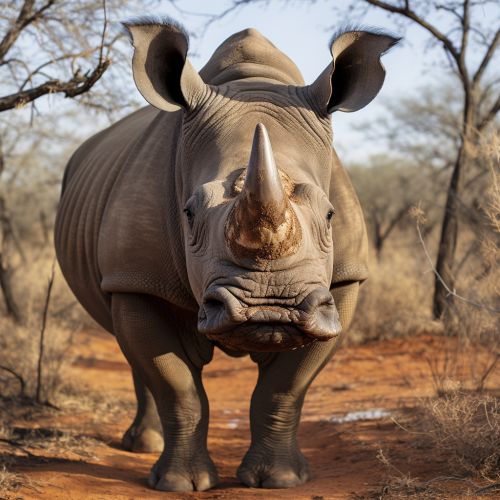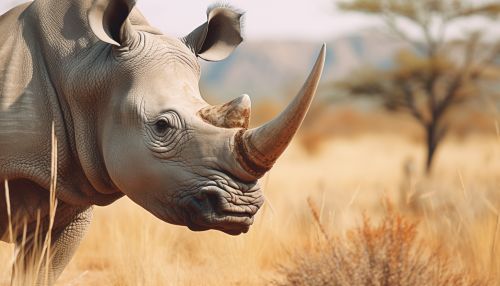Rhinoceros
Taxonomy and Evolution
The rhinoceros is a member of the family Rhinocerotidae, which is part of the order Perissodactyla, or odd-toed ungulates. This order also includes horses and tapirs. The family Rhinocerotidae consists of only four extant genera: Ceratotherium, Dicerorhinus, Rhinoceros, and Diceros. These genera encompass five living species of rhinoceros.


The evolution of the rhinoceros dates back to the Eocene epoch, approximately 50 million years ago. The earliest rhinoceroses, such as Hyrachyus, were small and resembled modern tapirs in size and shape. Over time, rhinoceroses evolved into a variety of forms, with some species, like Paraceratherium, reaching immense sizes.
Anatomy and Morphology
Rhinoceroses are characterized by their large size, with some species reaching weights of up to 2,000 kilograms. They have a thick, protective skin that is formed from layers of collagen positioned in a lattice structure. This skin provides a natural armor against predators and environmental hazards.
One of the most distinctive features of the rhinoceros is its horn. Unlike the horns of most other animals, which have a bony core covered in a sheath of keratin, the horn of a rhinoceros is made entirely of keratin. This material is similar to that found in human hair and nails. The horn grows from the skin and can be worn down or broken off without causing harm to the animal.
Behavior and Ecology
Rhinoceroses are generally solitary animals, with the exception of mothers and their young. They are also territorial, with males marking their territory with urine and dung piles. These animals have poor eyesight but have excellent senses of hearing and smell to detect predators and other rhinoceroses.
Rhinoceroses are herbivores, feeding on a variety of plant matter. Some species, like the white rhinoceros, are grazers that eat grasses, while others, like the black rhinoceros, are browsers that eat leaves, branches, and shoots.
Conservation
All species of rhinoceros are threatened by poaching and habitat loss. The primary threat to rhinoceroses is poaching for their horns, which are highly valued in traditional Chinese medicine and for ornamental uses. Efforts to conserve rhinoceros populations include anti-poaching measures, habitat protection, and breeding programs in captivity.
